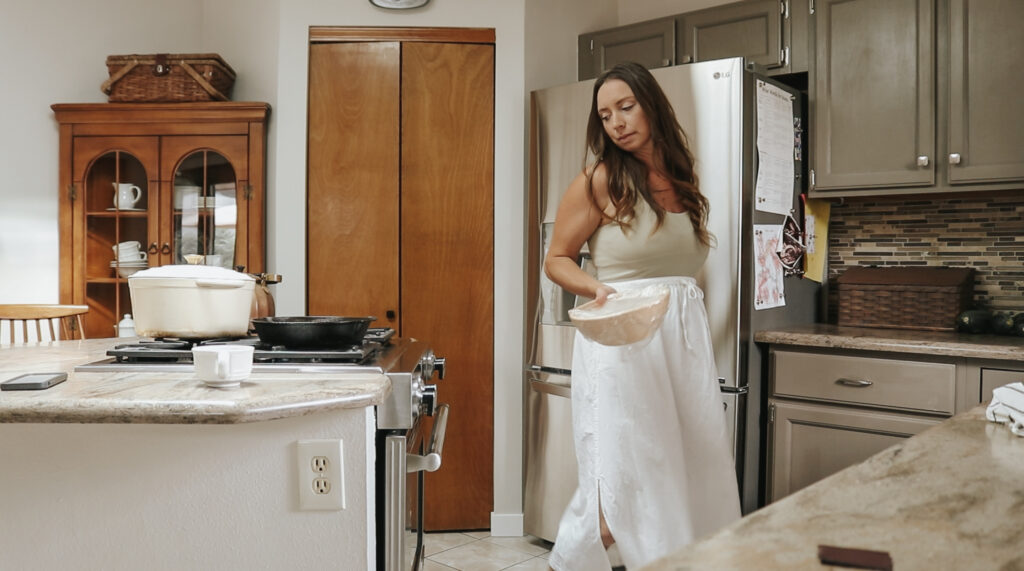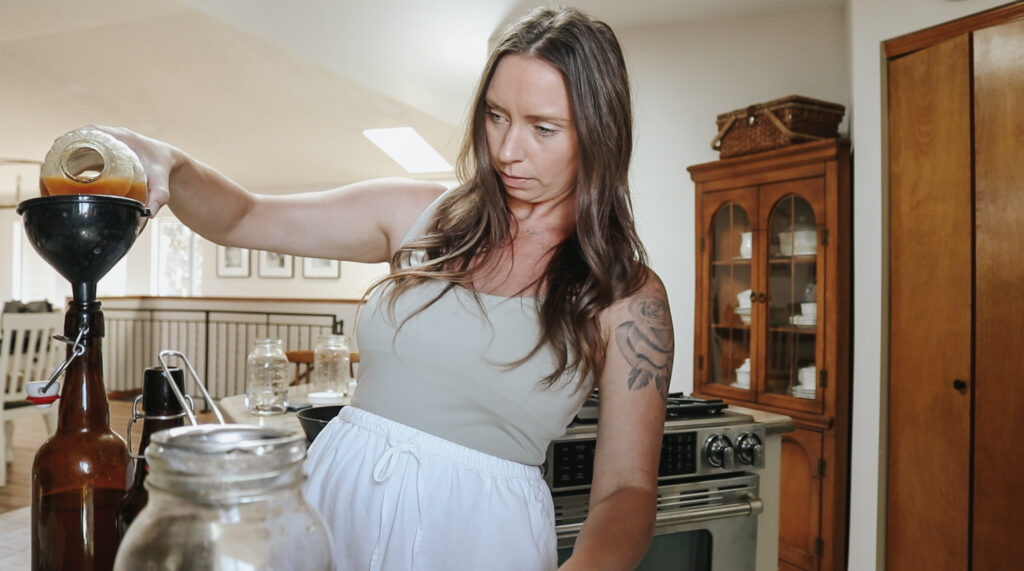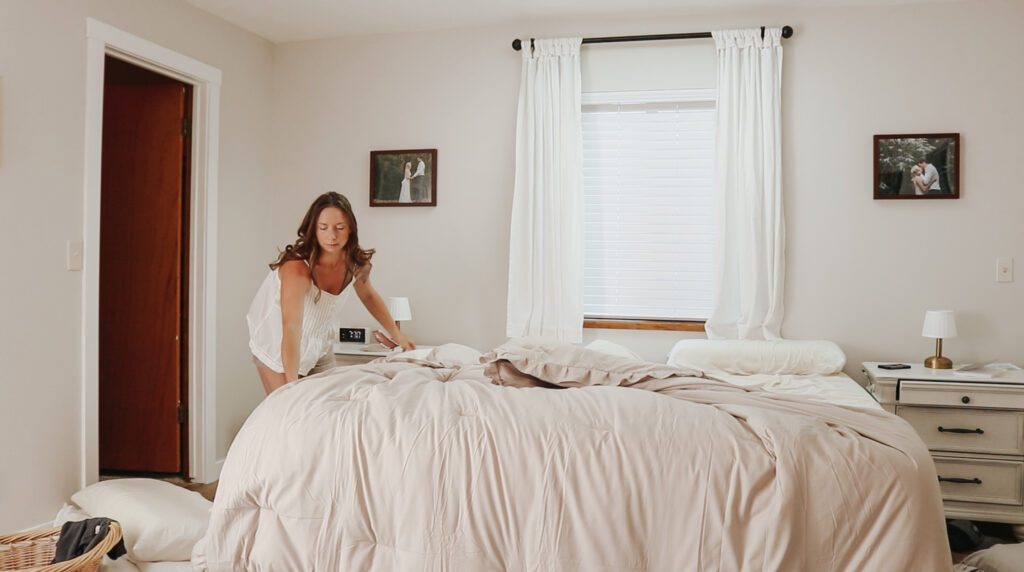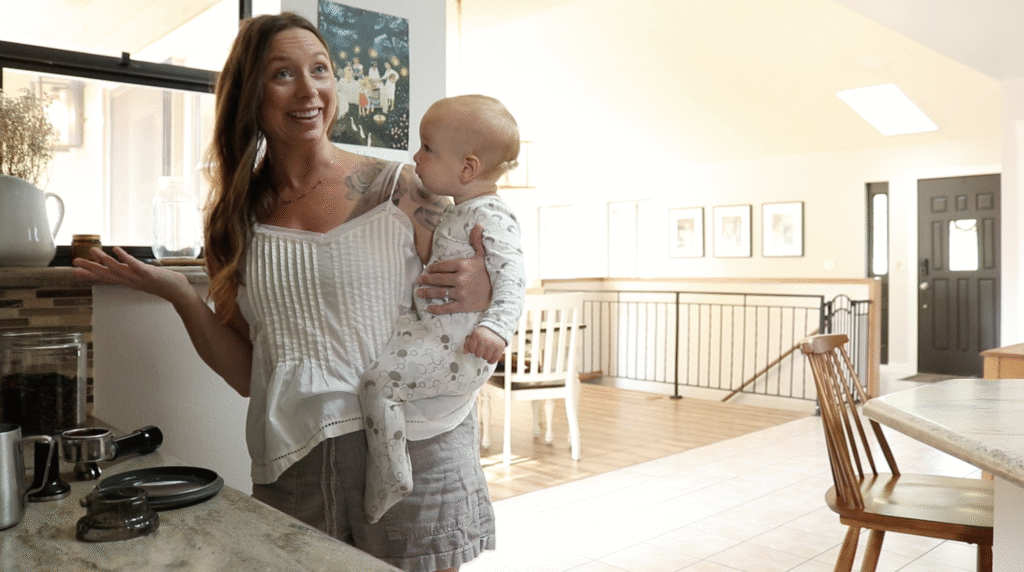Why You Can’t Change (Even As a Christian Mother)—And What To Do Instead
You keep trying to change.
To be more patient.
To stop yelling.
To feel joy again.
You pray. Repent. Set new goals. Read the books. Try the homemaking systems.
But it never sticks.
The reason you can’t change is not because you’re a bad mom, a bad Christian, or a lost cause.
But because the way you’ve learned to cope with stress and overwhelm is silently wrecking you.
And until you see it for what it is, you’ll stay stuck in the same cycle of stress, coping, reacting poorly and then feeling guilt… even as a Christian mother who wants so badly to change.
A High-Altitude Wake-Up Call
Years ago I was traveling with a friend in Cusco, Peru, where it’s 11,000 feet above sea level. There’s about 30% less oxygen than at sea level so your body has to work harder to deliver oxygen to your organs.
If you’ve never been that high, the moment you step off the plane, you feel it like a gut punch—tight chest, shortness of breath, lightheadedness.
The locals are used to it of course. But for outsiders, it feels like you’re suffocating and it’s shocking. There’s no real escape and you just have to endure it until you get used to it. It’s hard to sleep, walk, basically just hard to live in general. They hand you coca leaves to chew on and keep oxygen tanks in hotels for the ones who really struggle – but those are just temporary reliefs. They don’t solve the underlying problem: Your body wasn’t designed to live at this altitude without adjusting.
Living in Mental High Altitude

Most moms are living like this every day. Not in the mountains, but in their own minds and bodies.
Gasping for air.
Barely functioning under the weight of stress, overstimulation, and guilt.
And just like in Cusco, they’re handed quick fixes: self-care tips, parenting hacks, even a vent session with a friend. But those are just oxygen tanks.
They may help for a moment, but they don’t change the altitude. They don’t heal the environment you’re stuck in.
And after a while, you start to believe that this is just what motherhood feels like.
But it doesn’t have to be.
It’s Not That You’re a Bad Mom
If you’ve ever thought to yourself, “Why can’t I just be better? Kinder? Calmer?”—you’re not alone.
But what’s happening underneath the surface might surprise you.
It’s not that you’re a bad mom. Or a failing Christian. Or somehow just not trying hard enough.
There’s something deeper going on—and once you see it, everything starts to make sense.
We’ll talk about what’s actually happening inside your body, how your coping cycles keep you trapped in reactions you don’t want, and—most importantly—how to change.
I. You’re Not a Failure—You’re Stuck in a Cycle That Feels Safer

It’s Not Addiction to Comfort—It’s a Search for Safety
You’re not addicted to comfort—your brain is looking for safety.
What looks like procrastination, zoning out, scrolling, overeating, or fits of anger isn’t you sabotaging your life on purpose.
It’s your body doing exactly what it was trained to do—protect you from perceived danger.
It’s not your lack of self control—it’s that you’re living in survival mode.
When Emotions Boil Over
I know the feeling of experiencing such a buildup of negative emotions all day that screaming or slamming cabinets, or breaking something seemed like the best viable option for relief.
It wasn’t that I wanted to lose control—it was that I didn’t know how to not.
Why You Stay Stuck

Subconsciously, coping feels safer than changing.
- The over-controlling? Feels safer than feeling out of control.
- The people-pleasing? Feels safer than risking rejection.
- The procrastination? Feels safer than potential failure.
Even when these patterns hurt you, they still feel familiar—and your brain is wired to choose familiarity over the unknown, every time.
So if every attempt at change ends in burnout or shutdown, here’s why:
Your limbic system doesn’t learn by logic. It learns by repetition and environment.
Which means until you retrain your nervous system, you’ll keep defaulting back to the same unhelpful cycles:
Desire to change → Strive to change → Get triggered → Fall into old pattern → Feel shame → Repeat.
You Need a System
Maybe you’ve resonated. Maybe you’ve even cried a little.
But… has anything really changed?
If you’re there wondering why your mornings still rushed and your tone is still sharp…
Wondering why your evenings are still heavy with guilt? And you’re still stuck in the cycle of “just survive the day” and wondering if you’ll ever change?
You need a system.
One that actually rewires how you think and respond.
One that doesn’t depend on your energy or willpower.
One that anchors you so deeply that even a hard day can’t steal your peace.
II. Why Burnout Keeps Coming Back

The Truth About Burnout
You’re not burnt out because you lack discipline or because this whole motherhood thing isn’t for you.
You’re burnt out because your nervous system is stuck in survival mode—and it’s been running on the same unhelpful patterns for too long.
A Moment of Truth
I remember asking someone I really looked up to how long is normal to feel burnt out and just totally depleted. I asked if it’s normal to feel in a state of survival mode of multiple years at a time with short blips of relief (maybe days or weeks) in between.
And her response, in short, was no.
It should be opposite. She explained that our baseline should be peace and joy—even in young motherhood. Burnout and survival mode should be brief seasons, then, you use those seasons to pivot, make changes, adjust your schedule, etc. to get back to baseline.
At the time I felt so ashamed that I had allowed myself to experience this for so long.
Ashamed that I must not be a good enough Christian or mother to go through something that isn’t normal.
But now, I’m so grateful for her honest response because it propelled me to make a change.
Burnout Isn’t the Norm

So many mothers go through their motherhood journey thinking burnout is normal because, frankly, it is quite common.
But it shouldn’t be this way.
So many of us are hanging out in circles with other moms who feel the exact same way and instead of exhorting and helping one another heal they are commiserating and thinking it’s all just very normal and how these years are supposed to be.
But it shouldn’t be this way.
Old Destructive Patterns (ODPs)
Burnout isn’t just the result of too much to do.
It’s the result of living inside unhealed, unhelpful patterns—what I call ODPs (Old Destructive Patterns).
These are the mental loops and coping behaviors we fall back on when we’re overloaded, fearful, or just trying to survive.
It’s Not Laziness—It’s Survival Wiring
That’s the real issue here.
It’s not laziness. It’s not lack of faith.
It’s survival wiring.
The very coping strategies we use to push through—shutting down, yelling, scrolling, micromanaging—actually create more of the chaos we’re trying to escape.
These aren’t personality flaws. They’re coping mechanisms.
But you can’t logic your way out of patterns your nervous system learned under pressure.
And you can’t discipline your way out of cycles that are rooted in fear.
What you need is regulation.
The kind that rewires how you respond to your kids, your thoughts, your environment.
The kind that doesn’t just change your habits… it changes your experience of life.
III. You’re Not Just Breaking Habits—You’re Becoming Someone New

Not Just Survival—Thriving
This isn’t about fixing yourself—it’s about becoming the woman God designed you to be.
You weren’t made to just survive motherhood.
You were made to thrive in it.
A Week of Peace
I remember the first time I went an entire week without raising my voice, without feeling overstimulated and overwhelmed, and actually feeling, for the first time—peace and joy.
Not because I was white knuckling it.
But because I actually felt calm.
That was the moment I knew: I wasn’t just coping better. I was becoming transformed.
The Power of Imagination
If you want to break these cycles here’s where I’d start:
Your imagination is one of the most powerful tools God gave you.
It’s not childish or optional—you’re always using your imagination whether for good or bad.
In the very first chapter of Scripture, we see God imagine something that doesn’t yet exist—Let there be—and then speak it into reality. And so it was.
While God uses His imagination to create beauty and order, ours can either align with truth… or with lies and fear.
Reclaiming Peace Through Imagination
The enemy wants to keep you stuck in the gap between who you are and who you think you should be.
And one of his favorite footholds? Your imagination.
If he can hijack your thoughts—get you ruminating on offenses, reliving your worst moments, or fearing something that hasn’t even happened—then he can trap your body in survival mode.
Because to your nervous system, imagined stress and real stress feel almost identical.
A 3-Step Process for Change

1. Track Your Triggers Without Shame
Begin noticing what actually stresses you out and when you start to spiral.
Is it noise? Mess? When your child does a certain thing? Are there common times of day?
2. Interrupt the Pattern
When you feel that wave of stress rising—the urge to yell, dwell, or check out—stop. Don’t power through.
Put space between the stressor and your stress response.
Scroll through baby photos, step outside barefoot, or pray.
3. Create Micro-Rhythms of Regulation
Build little 1–3 minute rituals into your day, especially around your most triggering times.
Create little routines that you look forward to just before those stressors.
They teach your body that you are safe. And you are being made new.
A Joyful Mother Builds a Peaceful Home
For some of you, just implementing these steps will help.
And for others, you don’t just need new tools—you need a total nervous system reset.
That’s exactly what I teach inside my free workshop: From Survival Mode to Peace-Filled Homemaking in 7 Days.
In this workshop, we move beyond coping hacks and get to the root:
- We retrain how your body responds to stress
- We rebuild your home atmosphere from the inside out
- And we walk through a proven system that leads to lasting peace and joy
If you’ve been stuck in survival mode and wondering if real change is possible—this is your next step.
Click the link below to sign up—it’s completely free and available to watch anytime.
Because remember:
If you want a peaceful home, you have to become a joyful woman.
And yes—you can become her.







